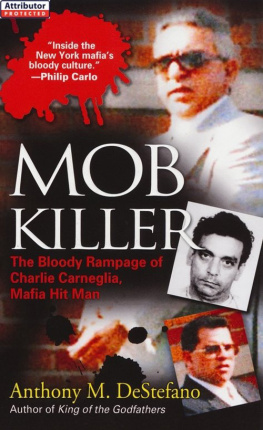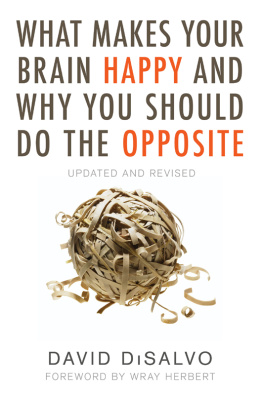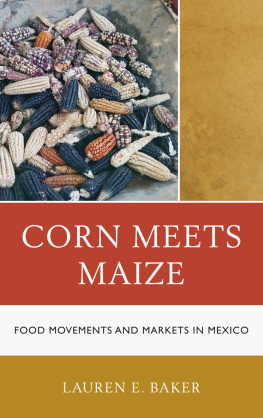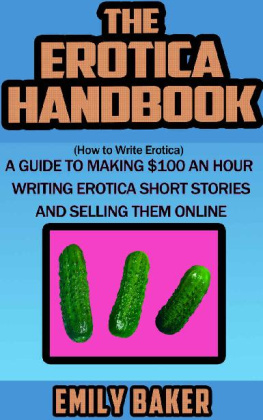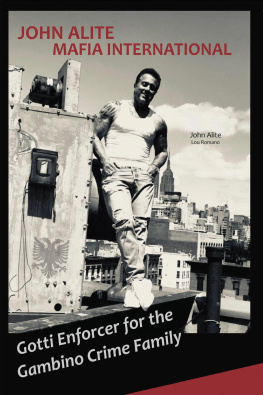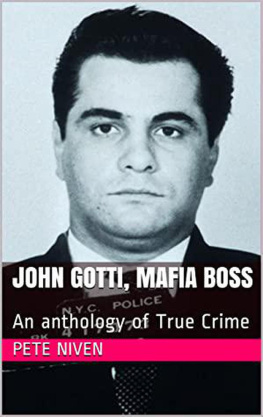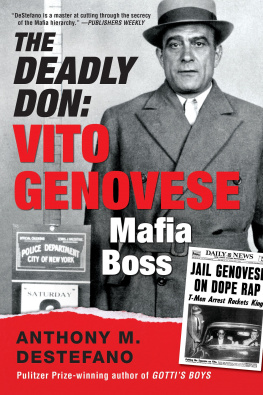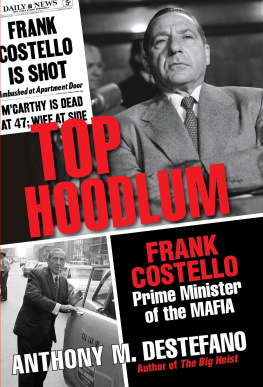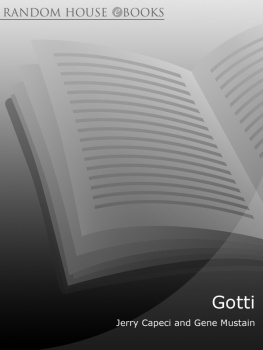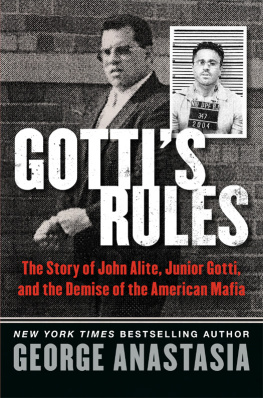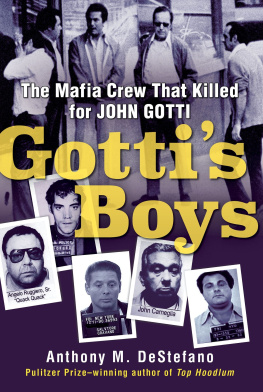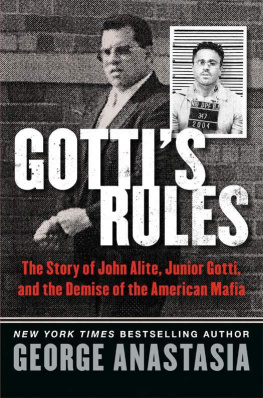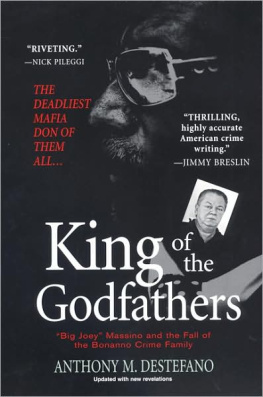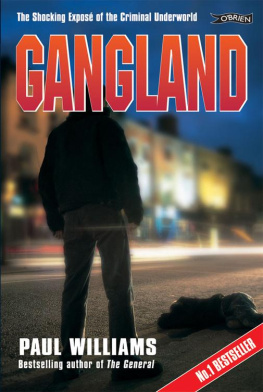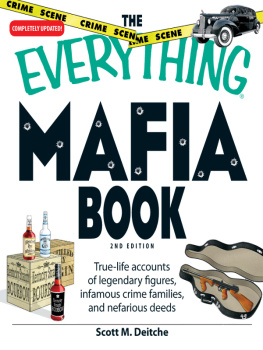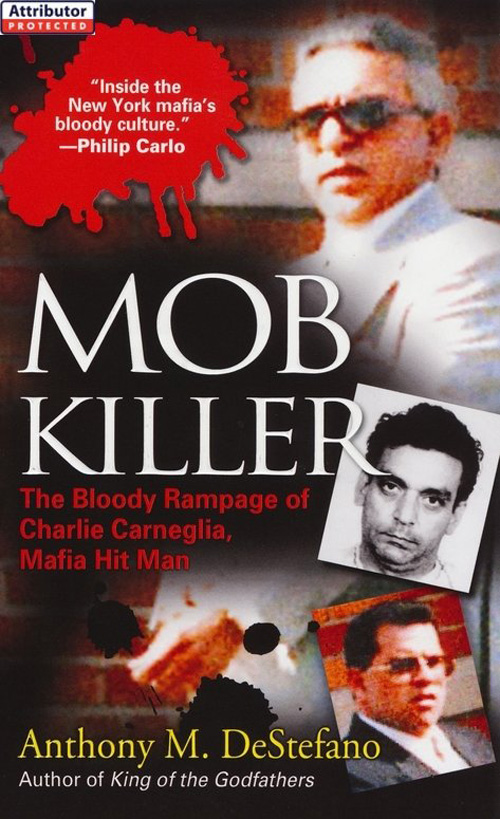Acknowledgments
When writing books about the Mob, an author usually finds that there are people who are happy to be acknowledged in print for their help, while others, for a variety of reasons, prefer to be thanked privately. My experience in writing this book about Charles Carneglia, the man who helped make the late John Gotti dangerous, was no different. There are those I can thank openly, while others will have to remain secret sources. Some still live in Howard Beach and still fear the power of the Mob.
I did ask Charles Carneglia after his federal conviction in 2009 if he would grant me an interview to talk about his life. He declined, and I must admit that I didnt really expect him to say yes. Through an intermediary, he said that talking to the press now wouldnt do him any good. So be it.
Among those I would like to thank is Gary Goldstein, my editor at Kensington. It was Gary who approached me in 2004 with the idea of doing a book about exBonanno boss Joseph Massino, which became, in hardcover, The Last Godfather, to be followed by paperback versions entitled King of the Godfathers. The Massino book became popular in the Mob true crime genre and raised my profile. After Charles was convicted, something in the story led Gary to push the idea of a book, and over a number of months the idea finally came together, leading me to tackle a complex subject that spanned decades of Mafia history. (While some purists will say that the term Mafia signifies the Italian-based crime syndicates and La Cosa Nostra refers to the American-grown variation, the terms have acquired meanings that are interchangeable in popular culture, so I often use them that way.)
Among those in law enforcement whom I want to thank are Robert Nardoza, chief spokesman for the Brooklyn U.S. Attorneys Office, and James Margolin, a spokesman for the New York FBI Office. Also to be thanked are Assistant U.S. Attorney Roger Burlingame and paralegal Shernita Moore, of the Brooklyn U.S. Attorneys Office, for helping me get my hands on the voluminous public records filed in the case of United States v. Charles Carneglia . Also meriting special thanks is investigator Steve Kaplan and FBI special agent Greg Hagarty.
Defense attorney Curtis Farber and Kelley Sharkey were generous with their time, answering questions during and after Charless trial, giving tantalizing bits of perspective that have worked their way into this story.
A number of retired law enforcement officials also helped in piecing together the story: John Goode, Steve Morrill, and Bruce Mouw, all ex-FBI, and Joseph Coffey, the former NYPD detective. Over the years, another ex-FBI agent, Phil Scala, who supervised the Gambino squad after Mouw retired from that position, gave critical perspective about the Mob and the crime family.
Defense attorneys are often fonts of information and anecdotes, and for that I would like to thank Frank Bari, Joseph Benfante, Charles Carnesi, Joseph Di-Benedetto, James DiPietro, Steven K. Frankel, Susan Kellman, Jeffrey Lichtman, John Meringolo, Murray Richman, Michael Rosen, and Joel Winograd. I also want to thank private investigator Jerry Gardner for his terrific memory about events in the trial of John A. Gotti in 2009.
In writing this book, I relied on the published works of a number of writers and journalists. They are Stewart Ain, Joseph Berger, James Bone (UK), Jimmy Breslin, Leonard Buder, Jerry Capeci, Larry Celona, Katie Cornell, Alison Gendar, Bruce Golding, Charles Grutzner, Tommy Hallissey, Tom Hays, Bill Hutchinson, Marvine Howe, Umberto Lucentini (Italy), John Marzulli, Larry McShane, Thomas Morgan, Alexandra Mosca, Gene Mustain, Selwyn Raab, William K. Rashbaum, John Riley, Max H. Seigel, Pervaiz Shallwani, Don Singleton, and Benjamin Weiser.
I also would like to note an interesting article on forensic anthropology posted on the Internet by Michael Kelleher that included details about the murder case against Adolph Luetgert, who, police said, dissolved his wife in acid in Chicago during the latter part of the nineteenth century. His article led me to others about the fascinating and gruesome process.
During the trials of John A. Gotti, his family members were accessible and courteous. Thanks go to his mother, Victoria, sisters Victoria and Angel, as well as his younger brother, Peter.
I also want to thank my former editor at Newsday, John Mancini, for allowing me to do this book, and then-metro editor Rosemary McManus for helping me through the clearance process.
Susan helped me through some computer hurdles, and Mousse, the wandering poodle, gave me enough diversion to help me through the writing process.
Finally I would like to thank my agent, Jill Marsal, for once again helping me through the process of seeing this book wind its way over the long road from an idea to a completed work.
Epilogue
The sentencing of Charles Carneglia wasnt the only big Mob story in New York on September 17, 2009. Across the East River in Manhattan federal court, John A. Gotti, who for years had been Charless overseer in the Gambino crime family, was on trial for the fourth time as the FBI tried to nail him for racketeering. Some of the same witnesses who had been arrayed against CharlesMichael DiLeonardo and John Alite in particularwere also being used in the effort to put Junior Gotti away for life.
But in Brooklyn federal court, on this particular day, the families of Charless murder victims werent interested in Gottis travails. They were lined up and waiting for their chance finally to tell Charles what they thought of him. Judge Weinstein had allowed relatives of those who were found by the verdict to have died at Charless hand to talk about the impact of the deaths. This would include Emily Gelb, even though the jury had not found Charles guilty of her brother Alberts death. This would be her moment, as it was for the other family members, to get solace and continue the healing process caused by the senseless killings so long ago.
There wasnt going to be any mincing of words by Weinstein. Under federal sentencing guidelines, Charles Carneglia was facing life in prison without parole. He would remain defiant to the last. Defense attorneys Curtis Farber and Kelley Sharkey had filed papers saying he was a changed man and should only get a fifteen-year sentence.
As is customary in such situations, prosecutor Roger Burlingame spoke first, saying that Charles had led a profane life, with his only role in the Gambino crime family being to kill and dispose of bodies. While evidentiary rulings had hamstrung the prosecutions effort to bring up reference to acid baths in body disposal, such wasnt the case now.
He relished the job, said Burlingame. He desecrated the bodies of Gambino family victims by melting them in acid.
In so many ways, the day was for the families of the dead. The four daughters of slain armored-car driver Jose Delgado Rivera wanted the maximum sentence, and it fell to Mildred Delgado-Jimenez to address the court. She didnt hide her loathing of Charles Carneglia.
I hate you with everything I have, she said, glancing at Charles.
For Emily Gelb, the day turned out to be one of healing. The jury deadlock over the death of her brother, Albert, had wounded her terribly. But now, standing in court with Evelyn Colon, another of Delgado Riveras daughters, she felt a great strength. Behind Emily, packing the public gallery, were a mass of court officers who had steadfastly carried the torch for justice, as well as Emilys family and friends. Holding a framed photo of her brother, Emily then underwent the cathartic experience of speaking directly to Charles.

